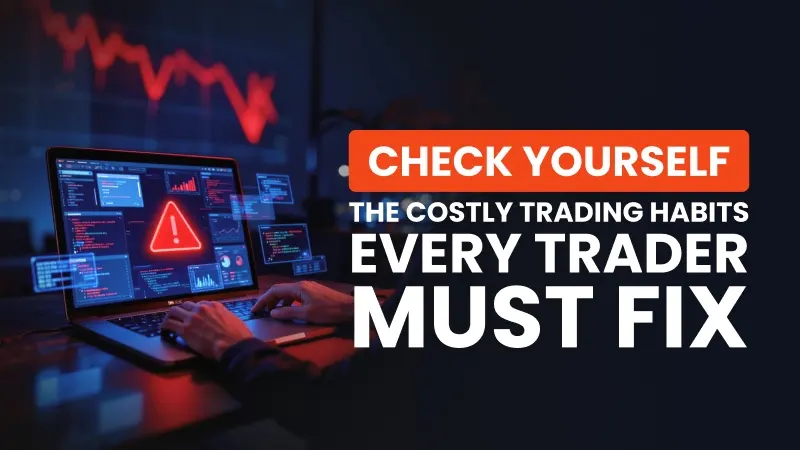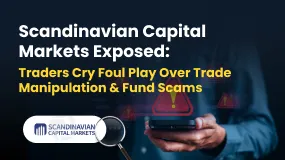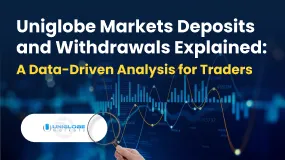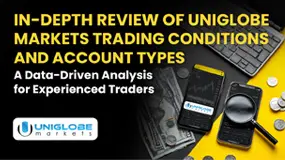简体中文
繁體中文
English
Pусский
日本語
ภาษาไทย
Tiếng Việt
Bahasa Indonesia
Español
हिन्दी
Filippiiniläinen
Français
Deutsch
Português
Türkçe
한국어
العربية
Understanding Bullish and Bearish Divergence in Forex
Abstract:One of the most effective yet often overlooked tools in technical analysis is divergence, specifically bullish and bearish divergence. Understanding how to spot and interpret divergence can significantly enhance your ability to identify trend reversals and improve your entry and exit points.

One of the most effective yet often overlooked tools in technical analysis is divergence, specifically bullish and bearish divergence. Understanding how to spot and interpret divergence can significantly enhance your ability to identify trend reversals and improve your entry and exit points.
What Is Divergence in Forex?
Divergence occurs when the price of a currency pair moves in the opposite direction from a technical indicator. Divergence is a sign that the current trend may be weakening and that a potential reversal or pullback could be imminent.
Types of Divergence
There are two main types of divergence in forex:
- Bullish divergence
- Bearish divergence
Bullish Divergence
A bullish divergence forms when the price of a forex pair makes a lower low, but the indicator forms a higher low. This indicates that selling pressure is weakening, despite the price still falling. It often precedes a bullish reversal.
Bearish Divergence: Warning of Potential Downturns
A bearish divergence happens when the price makes a higher high, but the indicator shows a lower high. This suggests that buying momentum is fading, even as the price climbs, and could indicate a trend reversal to the downside.
Example:
- Price: Higher high
- MACD/RSI: Lower high
This indicates weakening bullish momentum and potential selling pressure ahead.
Ideal Trading Conditions:
- During an uptrend
- When prices are overbought
- Confirmed by resistance levels or candlestick patterns
Regular vs. Hidden Divergence
In addition to standard divergence, there's also hidden divergence, which can signal trend continuation rather than reversal.
| Type | Signal | Price Action | Indicator |
| Regular Bullish | Reversal | Lower Low | Higher Low |
| Regular Bearish | Reversal | Higher High | Lower High |
| Hidden Bullish | Continuation | Higher Low | Lower Low |
| Hidden Bearish | Continuation | Lower High | Higher High |
Tools for Identifying Divergence
Several indicators help traders identify divergence effectively, they are:
- RSI (Relative Strength Index)
- MACD (Moving Average Convergence Divergence)
- Stochastic Oscillator
- Awesome Oscillator
You can apply these strategies on popular trading platforms, such as MT4, MT5, TradingView, or cTrader. We also advise you to use candlestick patterns frequently. Do not rely on divergence alone in high-volatility markets or during news releases. In addition, traders should practice with demo accounts before using real capital.
Conclusion
Bullish and bearish divergences are powerful tools that can offer early warning signs of trend reversals in the forex market. When used correctly alongside other indicators and risk management strategies, divergence can give traders a valuable edge.
However, like all technical tools, divergence is not foolproof. Always make yourself comfortable and do more research can maintain a disciplined approach to trading.

Disclaimer:
The views in this article only represent the author's personal views, and do not constitute investment advice on this platform. This platform does not guarantee the accuracy, completeness and timeliness of the information in the article, and will not be liable for any loss caused by the use of or reliance on the information in the article.
Read more

Check Yourself: The Costly Trading Habits Every Trader Must Fix
Are the trading habits you barely notice the very ones quietly destroying your profits, and could a single overlooked mistake be costing you far more than you realise?

Scandinavian Capital Markets Exposed: Traders Cry Foul Play Over Trade Manipulation & Fund Scams
Does Scandinavian Capital Markets stipulate heavy margin requirements to keep you out of positions? Have you been deceived by their price manipulation tactic? Have you lost all your investments as the broker did not have risk management in place? Were you persuaded to bet on too risky and scam-ridden instruments by the broker officials? These are some burning issues traders face here. In this Scandinavian Capital Markets review guide, we have discussed these issues. Read on to explore them.

Uniglobe Markets Deposits and Withdrawals Explained: A Data-Driven Analysis for Traders
For any experienced trader, the integrity of a broker isn't just measured in pips and spreads; it's fundamentally defined by the reliability and transparency of its financial operations. The ability to deposit and, more importantly, withdraw capital seamlessly is the bedrock of trust between a trader and their brokerage. When this process is fraught with delays, ambiguity, or outright failure, it undermines the entire trading relationship. This in-depth analysis focuses on Uniglobe Markets, a broker that has been operational for 5-10 years and presents itself as a world-class trading partner. We will move beyond the marketing claims to scrutinize the realities of its funding mechanisms. By examining available data on Uniglobe Markets deposits and withdrawals, we aim to provide a clear, evidence-based picture for traders evaluating this broker for long-term engagement. Our investigation will be anchored primarily in verified records and user exposure reports to explain the Uniglobe Mar

In-Depth Review of Uniglobe Markets Trading Conditions and Account Types – An Analysis for Traders
For experienced traders, selecting a broker is a meticulous process that extends far beyond headline spreads and bonus offers. It involves a deep dive into the fundamental structure of a broker's offering: its regulatory standing, the integrity of its trading conditions, and the flexibility of its account types. Uniglobe Markets, a broker with an operational history spanning over five years, presents a complex case study. It offers seemingly attractive conditions, including high leverage and a diverse account structure, yet operates within a regulatory framework that demands intense scrutiny. This in-depth analysis will dissect the Uniglobe Markets trading conditions and account types, using data primarily sourced from the global broker inquiry platform, WikiFX. We will explore the Uniglobe Markets minimum deposit, leverage, and account types to provide a clear, data-driven perspective for traders evaluating this broker as a potential long-term partner.
WikiFX Broker
Latest News
GCash Rolls Out Virtual US Account to Cut Forex Fees for Filipinos
The 350 Per Cent Promise That Cost Her RM604,000
INZO Commission Fees and Spreads Breakdown: A 2025 Data-Driven Analysis for Traders
Garanti BBVA Securities Exposed: Traders Report Unfair Charges & Poor Customer Service
"Just 9 More Lots": Inside the Endless Withdrawal Loop at Grand Capital
Private payroll losses accelerated in the past four weeks, ADP reports
Core wholesale prices rose less than expected in September; retail sales gain
Consumer confidence hits lowest point since April as job worries grow
CFTC Polymarket Approval Signals U.S. Relaunch 2025
MH Markets Commission Fees and Spreads Analysis: A Data-Driven Breakdown for Traders
Currency Calculator



